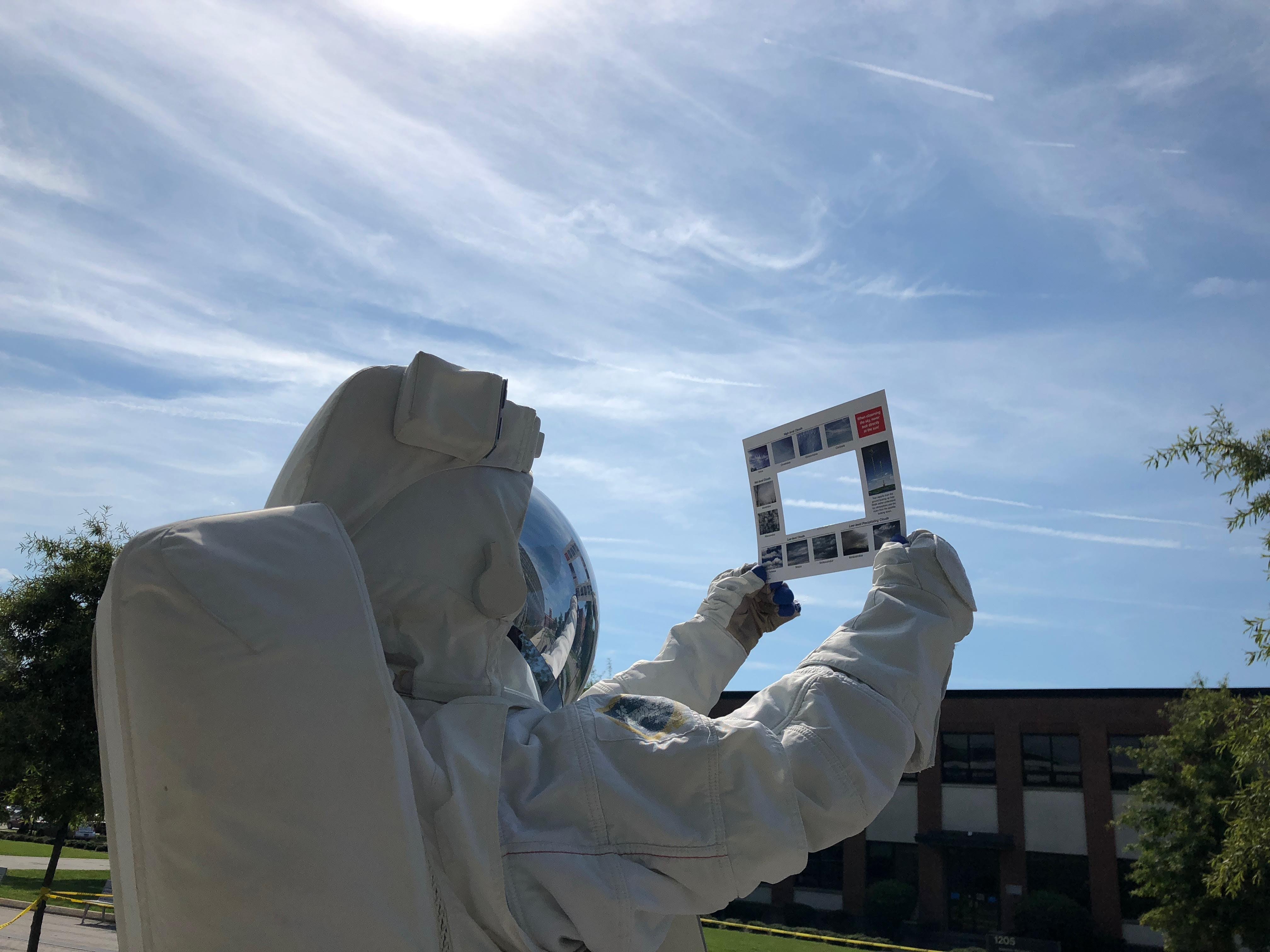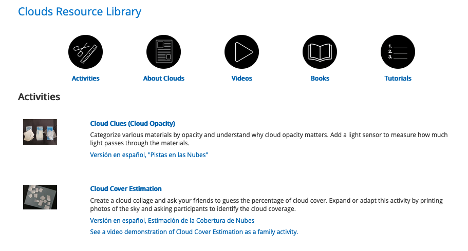One Million Satellite Matches - GLOBE Observer
NASA GLOBE Clouds: One Million Satellite Matches
Short link to this page: https://observer.globe.gov/globe1m
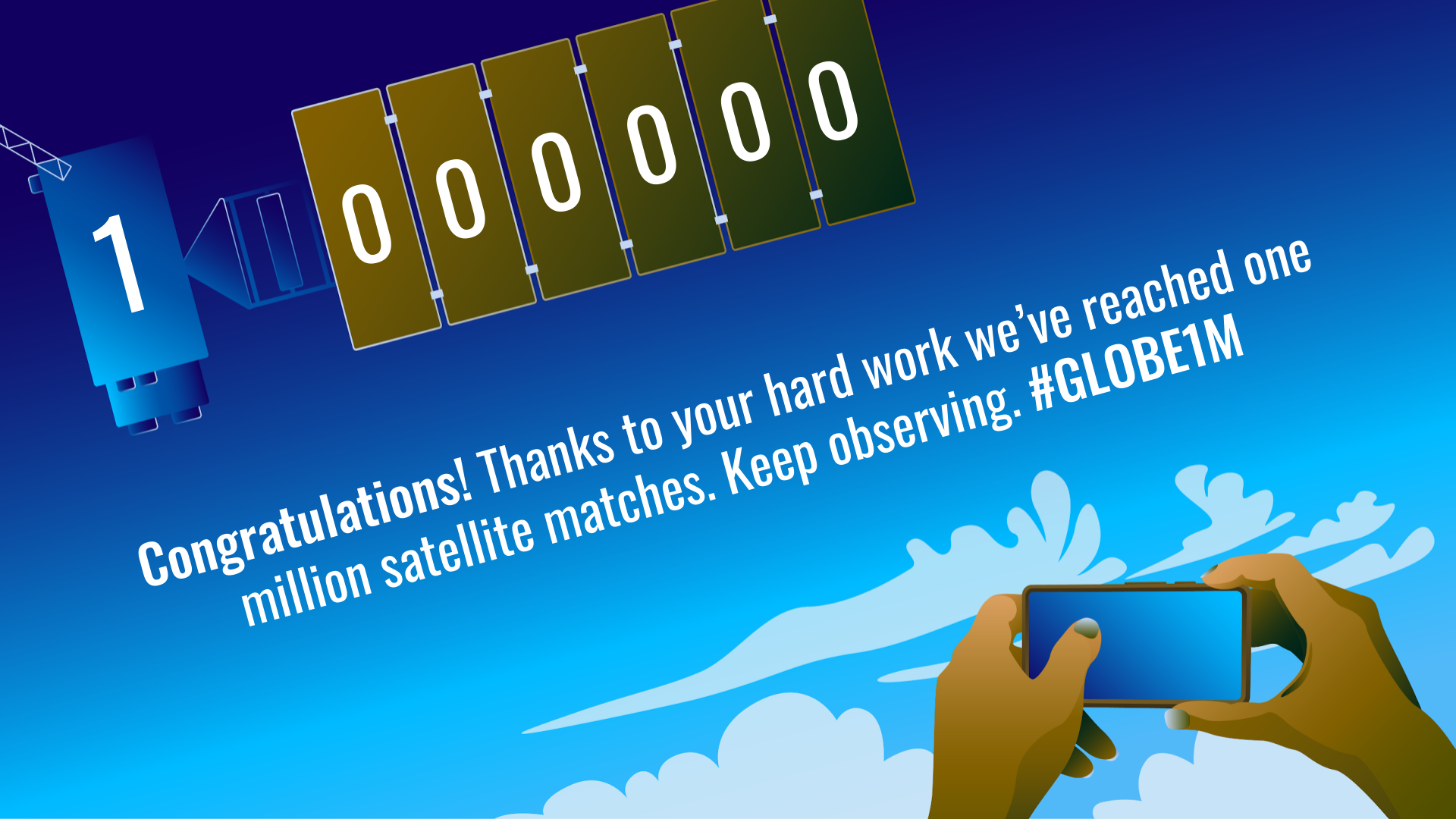
The NASA GLOBE Clouds Team has reached one million satellite matches! (Read the news release from NASA Langley. ![]() ) Thanks to you, we met this goal. Let's see how many more we can get as we all keep observing the clouds.
) Thanks to you, we met this goal. Let's see how many more we can get as we all keep observing the clouds.
Current number of GLOBE Clouds Satellite Matches:
1,000,000 and counting!
On 13 September 2022, a celebration event in honor of the million satellite matches was held at NASA Langley Research Center including guest speakers from NASA Langley Research Center, GLOBE Program sponsors and GLOBE Implementation Office, CERES Science Team, SciStarter, and GLOBE community participants. Watch the video of the event below.
In addition to the full recording, you can also watch the pre-recorded excerpts of the congratulatory messages from GLOBE sponsors ![]() , and about the impact of GLOBE Clouds
, and about the impact of GLOBE Clouds ![]() .
.
How to Participate
We welcome you to join our celebration recognizing your contributions to reaching one million satellite matches. How?
First, help us keep collecting data!
Continue to submit your cloud observations to GLOBE.
Second, share with us on social media!
How has GLOBE Clouds inspired you? What have you learned from the satellite matches? Share a written reflection, short video, or artwork commemorating this event by using the hashtag #GLOBE1M.
Third, test your GLOBE Clouds knowledge!
The more we observe clouds, the more we learn. Test your GLOBE Cloud skills by taking this Cloud Quiz ![]() .
.
About GLOBE Clouds
The NASA GLOBE Clouds team at NASA Langley Research Center receives over 200k citizen science sky observations each year.
While satellites give us a big picture of what’s going on, they sometimes have trouble with the details. Certain cloud types, like thin wispy cirrus clouds, are sometimes hard to detect by certain satellites. Certain conditions like clouds in a snow-filled area make it difficult for satellites to distinguish what is a cloud and what is snow. Satellites can only capture a top-down view of our planet. Your ground observations complement what the satellites cannot see.
When a GLOBE cloud observation is taken within 15 minutes of a satellite observation, then both points of view are matched. Some satellites are geostationary satellites, such as GOES, Himawari, and Meteosat. Others are polar orbit satellites, such as Aqua, Terra, and CALIPSO. The satellite matched data provides an augmented data set for research. When a match is made, the team sends a personalized email to participants with the matching satellite data. Approximately 4K emails are sent to the participants each month.
GLOBE satellite matching started in 2017. Since then, the project has received over one million GLOBE clouds observations, and has reached a major milestone of one million satellite matches!
You can read more about the value of combining ground and space measurements, in the blog "Counting to a Million Matches." You can also learn more about matching to satellites on our Clouds Science page, or check out the videos below.
How to Turn on Satellite Flyover Notifications
Learn how to turn on satellite flyover notifications for your current location.
Satellite Matching
Learn why satellite matches are important, and see an example of a satellite match.
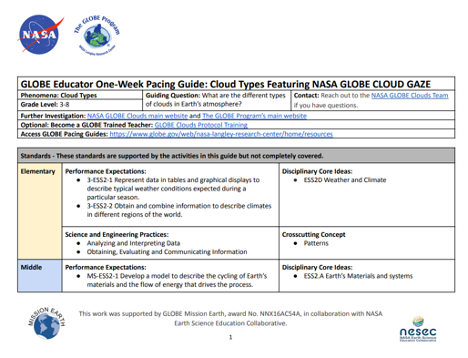
Pacing Guide: Cloud Types Featuring NASA GLOBE CLOUD GAZE
A pacing guide for educators with one week's worth of content related to the question, "What are the different types of clouds in Earth’s atmosphere?" Includes relevant standards, background information, activities, and assessment options. Grade level: 3-6
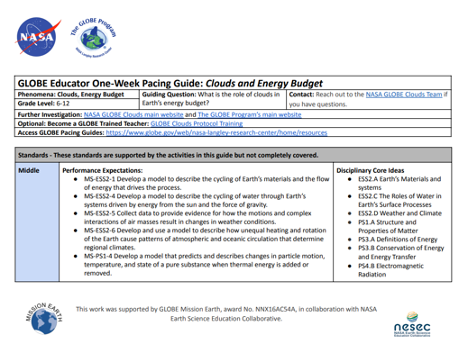
Pacing Guide: Clouds and Energy Budget
A pacing guide for educators with one week's worth of content related to the question, "What is the role of clouds in Earth’s energy budget?" Includes relevant standards, background information, activities, and assessment option. Grade level: 6-12
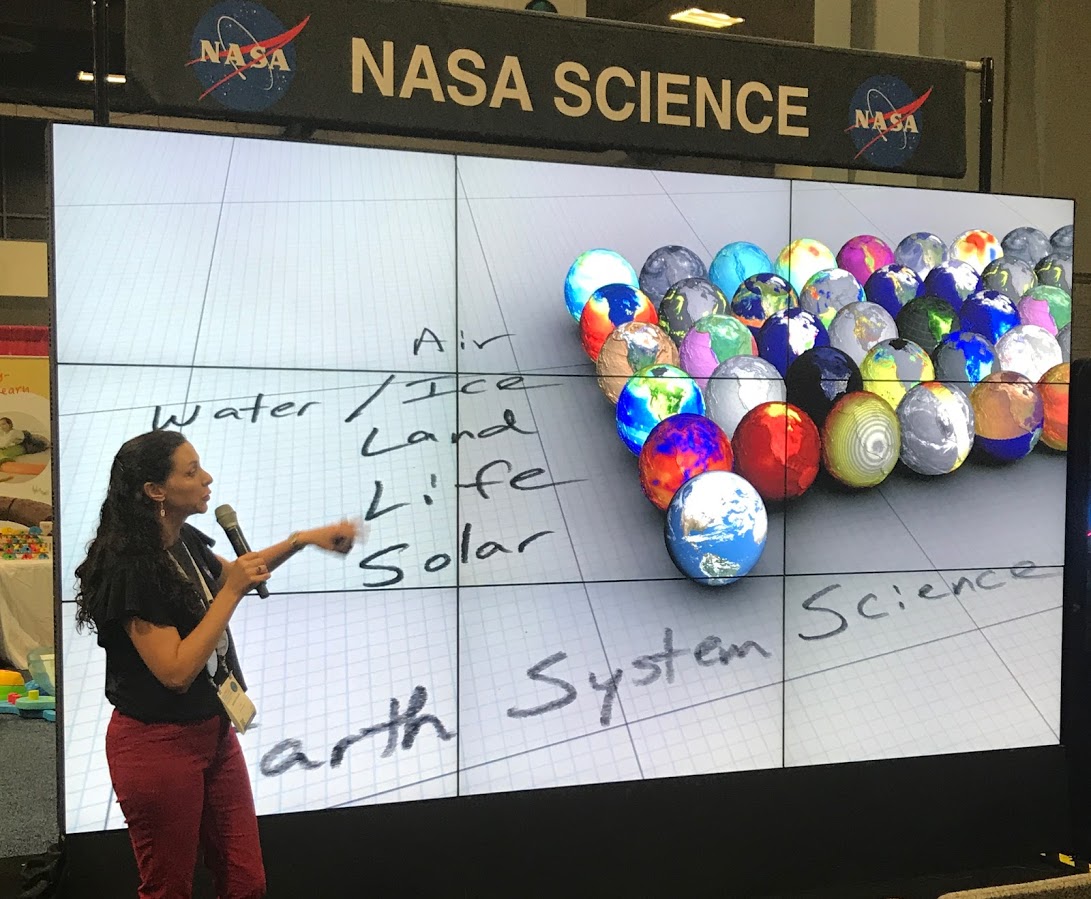
A playlist of five videos with experts explaining the science of clouds and the connections to citizen science, including Jessica Taylor, principal investigator for GLOBE Clouds, on "What is Citizen Science?" [4:08], Dr. Kristopher Bedka on "Clouds and Weather" [9:48], Dr. Patrick Taylor on "Clouds and Earth's Climate" [7:44], Dr. Kristina Pistone on "Clouds and Aerosols [5:24], Dr. J. Brant Dodson on "Clouds Research and Citizen Science" [7:40], and Dr. Bill Smith on “The Solar Terminator Problem” [8:16].
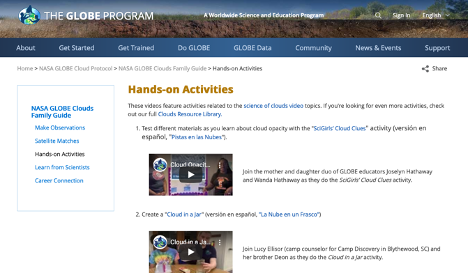
Activity Videos on GLOBE Clouds Website
A page of videos featuring activities related to the science of clouds video topics.
Resources For Researchers
Access files by year and special events. Review data documentation files.
View relevant science publications using GLOBE citizen science data in research.









